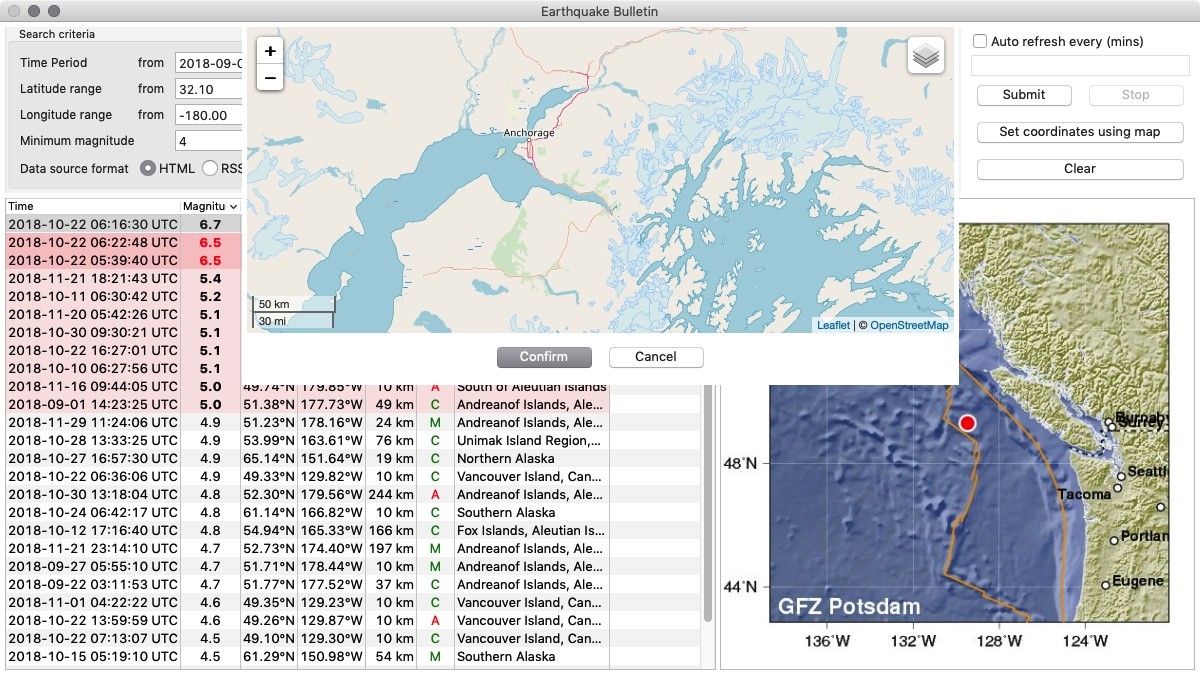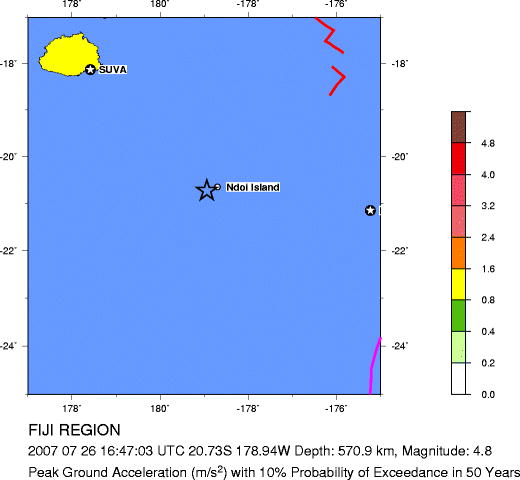

Selected routine mining blasts within United States territory are provided in files named isfexpYYYYMM.dat (using bulletin format) from October 1999 through July 2013. These are available in monthly files from January 1999 through July 2013, and in weekly files from August 2013 through the present time.

ISF files are available only for final monthly data, in bulletin format. As with IMS 1.0, ISF has both a bulletin and arrivals format. ISF format was approved by the International Association of Seismology and Physics of the Earth’s Interior (IASPEI), and is an extension of the IMS 1.0 data format created by the International Data Center of the Comprehensive Test Ban Treaty Organization (IDC/CTBTO). ISF files are created to share data with the International Seismological Centre but are used at other data centers and contain hypocenter parameters, macroseismic observations, and phase and amplitude data. The files are voluminous, with even a zipped file of one week of data averaging 3-6 Mbytes. These files are the most complete representation of the PDE and contain hypocenter parameters, macroseismic observations, and phase and amplitude data. The advantage to QuakeML is that it uses a modern XML based format which allows for transmission of much more information than is possible with most of our older formats.

QuakeML is an open global standard and is developed by a distributed team in a transparent collaborative manner. QuakeML is a flexible, extensible and modular XML representation of seismological data which is intended to cover a broad range of fields of application in modern seismology. PDE data are distributed in several formats and the file names in the ftp directories indicate the format type of the file. Scans can be retrieved here: File formats The final PDE does not exist in machine readable format prior to February 1981. Historically the PDE contained two processing steps prior to the monthly PDE, the daily PDE, also referred to as the Quick Epicenter Determinations (QED or PDE-Q) and the weekly PDE (PDE-W) These files are no longer available because they are superseded by the monthly files.Īvailable formats: mchedr (1981/02 through 2013/07, ISF (1990 through 2013/7), and ehdf (1990 through 2013/7) January 1964 through January 1981: Macroseismic comments and additional information about geological effects for significant earthquakes may be modified on the USGS Earthquake Hazards Program website at any time after the monthly PDE has been finalized, but in general those changes will not be made in the files on the FTP site. In general, only minor changes were made to the solutions in this stage of review, but it is possible that new events were added, old events modified and occasionally some old events from the weekly PDE were removed. Until this process was stopped at the end of July 2013, once the monthly PDE files were posted, the corresponding weekly PDE files for that time period were removed from the FTP site, because they had been completely replaced by the information in the monthly PDE. Digital data files containing pick and amplitude measurements for this stage of review span from as early as 1981 through July 2013 and were posted in one-month increments once final review for that time period was completed. The final PDE was prepared in monthly increments, officially named the PDE Monthly Listing.
Usgs earthquake bulletin full#
Note that the 201330 files were actually the last full week of July and data are also contained in the July 2013 monthly file as described below.Īvailable formats: quakeML1.2 and ISF2.0 (see below) February 1981 through August 2013: The first “official” files of this new process are the ones named 201331. 201340), with “week 53” containing the data for the last day of the year, or last 2 days in case the year was a leap year. The files are numbered by year and week (e.g. The final PDE files are completed in weekly increments, with no separate monthly compilation (see below). Data Availability August 2013 to the Present: Timeline of Data Format Availability FormatĬlick timeline bar to access data. The rest of this page will be updated to reflect the new data source. PDE data is now available on the USGS ScienceBase website.
Usgs earthquake bulletin archive#
We use the word "Preliminary" for our final bulletin because the Bulletin of the International Seismological Centre is considered to be the final global archive of parametric earthquake data, in other words phase arrival (“pick”) times and amplitudes. The NEIC global earthquake bulletin is called the Preliminary Determination of Epicenters or PDE. Fax: +1-30 The Preliminary Determination of Epicenters (PDE) Bulletin


 0 kommentar(er)
0 kommentar(er)
